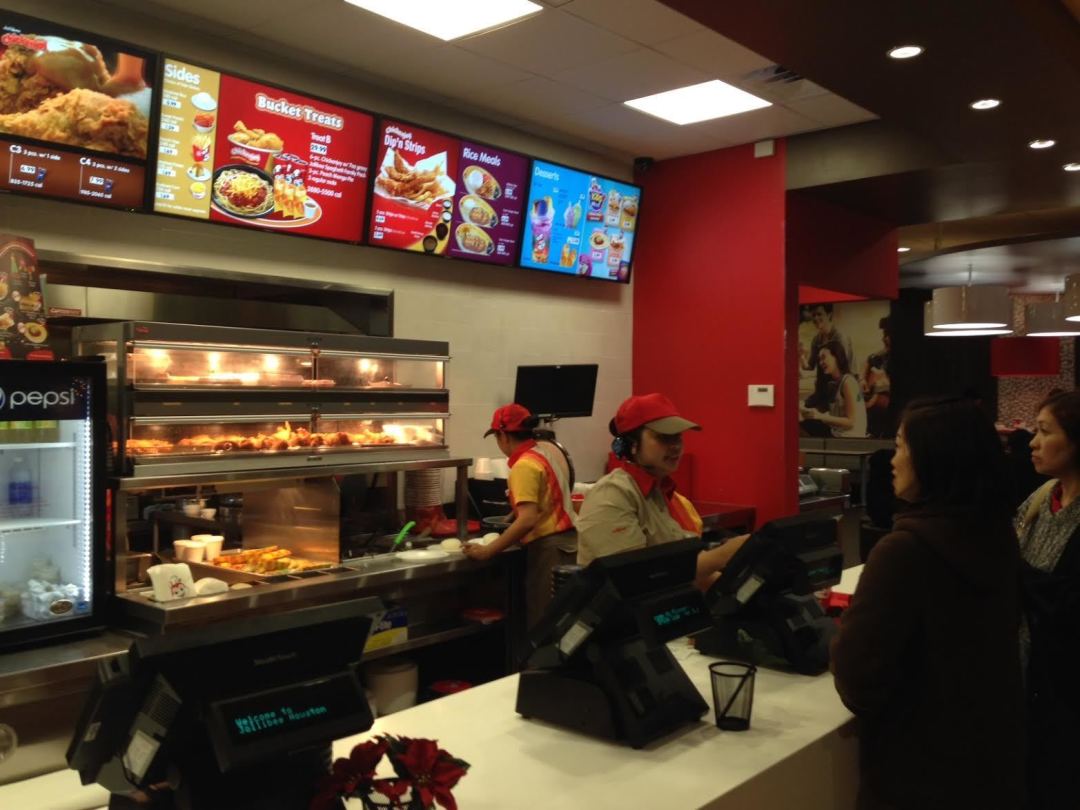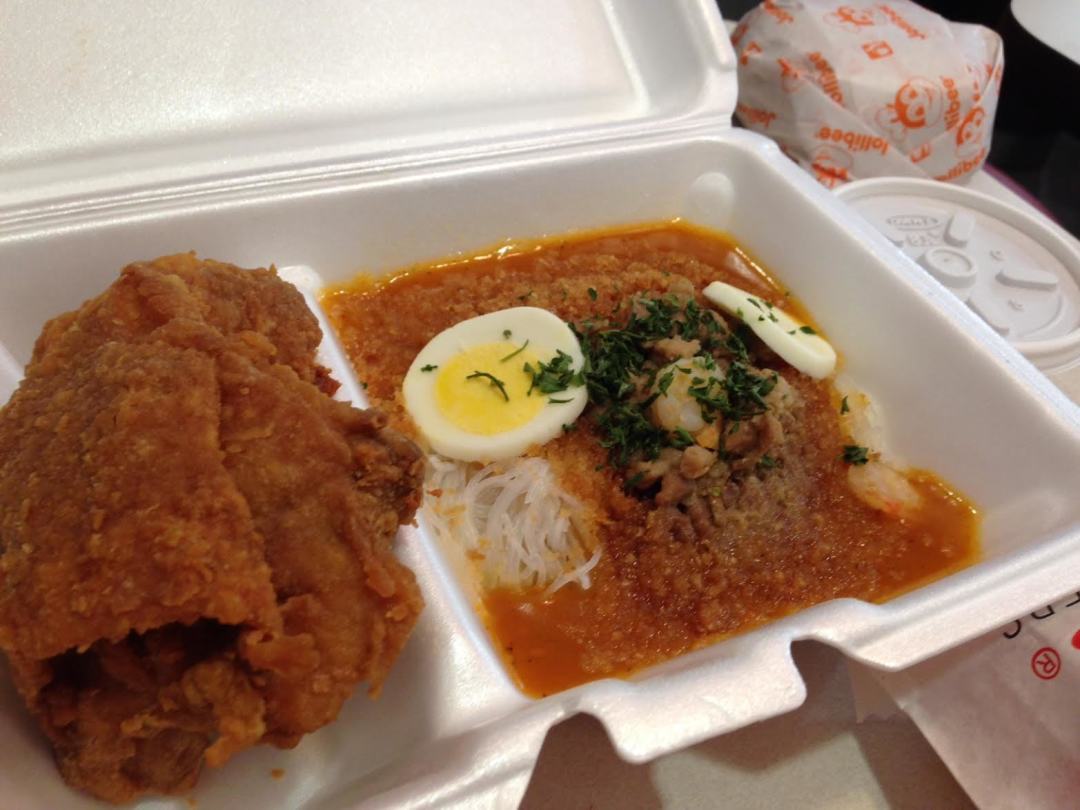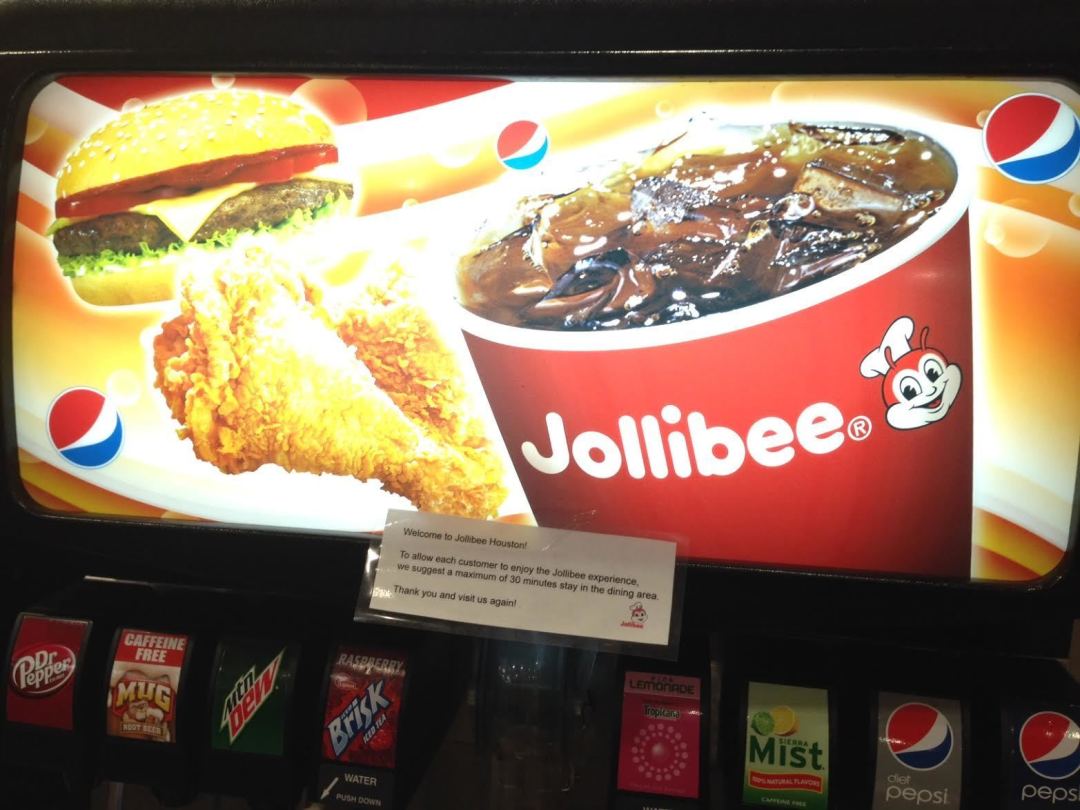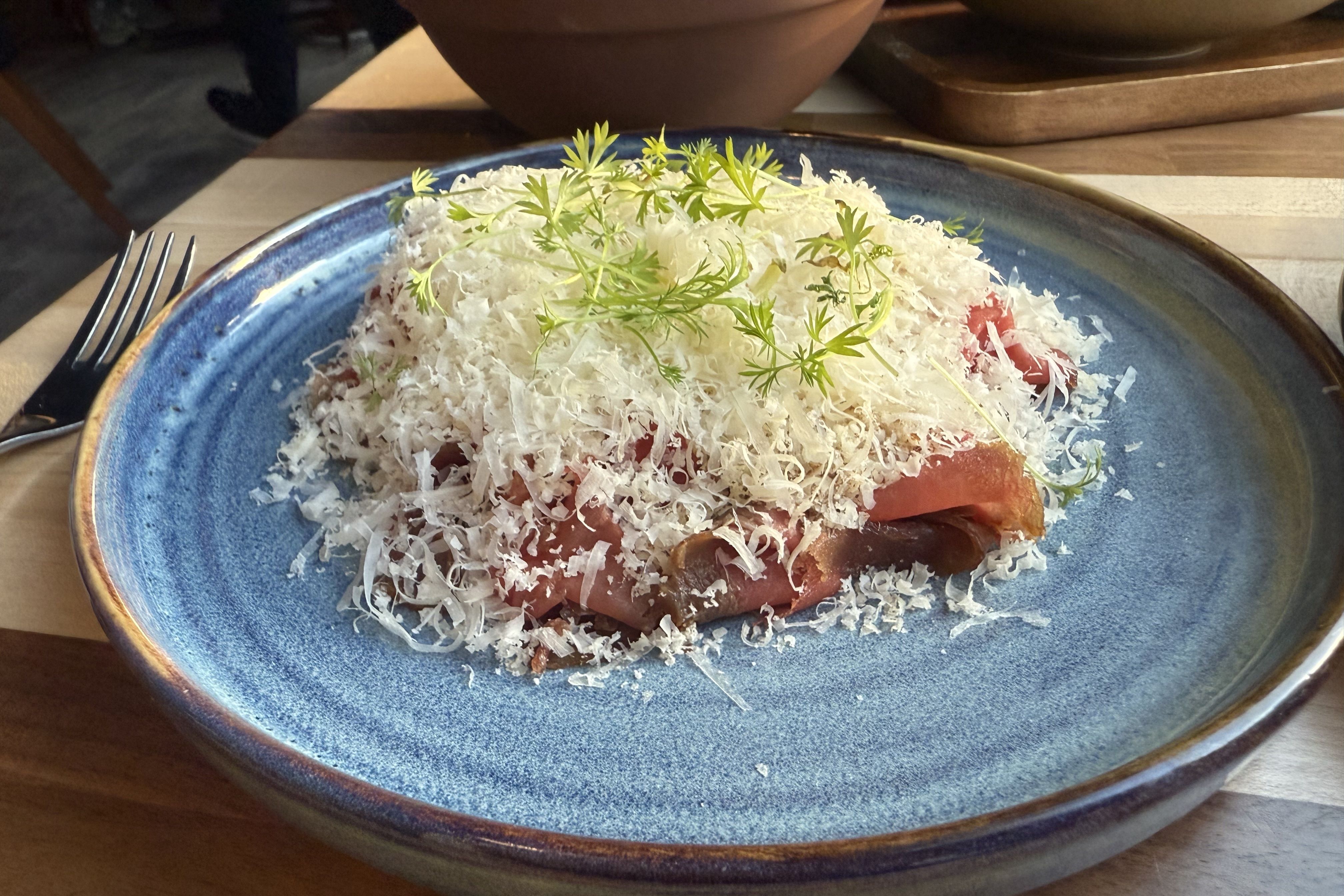Fast Food Filipino-Style at Jollibee

An Aloha Burger with fries at Jollibee; both are worth the drive to the Med Center.
Image: Katharine Shilcutt
For years, Godo's Bakery and Restaurant has served some of the city's finest Filipino food (and, more importantly, desserts), dishing up pounds of sweet pork belly from its buffet at lunch long before the pig part was popular in the mainstream. Now, it has company in the form of a fellow Filipino restaurant: Jollibee, the fast food chain based in Pasig City and often lauded as the Filipino version of In-N-Out Burger.
Jollibee
8001 South Main
650-296-9398
Jollibee opened its first Texas location in Houston this past September, drawing massive crowds that the Houston Chronicle likened to a "mob scene." Nearly four months later, Jollibee is no longer quite that busy. Still, a line snaked around the cash registers to the front door as of 7 p.m. last night; I was fortunate to have gotten there around 6:30 before the rush, leaving me plenty of time to consider my options.

Lines still get long inside Jollibee at night.
I wasn't sure what to expect at Jollibee, having never visited before. I scanned the menu for some familiar Filipino options yet found mostly burgers and fried chicken. Where was the jackfruit? The tocilog? The adobo or kare-kare or longanisa? I finally spotted one rice dish called, simply, N3 (to be fair, the writing on the giant menus behind the cash registers was small and my eyesight is terrible; it could have had a proper name I missed). It looked like palabok pancit, and indeed it was. You could get an add-on of fried chicken—which I quickly determined was Jollibee's most popular option—so I did. You never turn down a side of fried chicken,
My dining companion ordered the largest burger on the menu: an Aloha Burger with a slice of pineapple in a nod to the Philippines's island neighbors to the east. The Hawaiian touch was complemented with bacon, cheese, lettuce, tomato, and a sweet sauce not unlike the "special sauce" on a Big Mac (the Aloha Burger even sported a sesame seed bun). My buddy didn't care for it, handing it over after only two bites. I wolfed it down, savoring the way the cheese melted with a messy ooze across the bacon and pineapple. My friend called it "too sweet," something I've heard from nearly every non-Filipino I've eaten Filipino food with.

People order fried chicken as fast as Jollibee can make it.
"Western complaints about Filipino food are that it's too heavy (that's the Spanish influence), too salty and—especially—too sweet," writes Greg Bloom in his Lonely Planet guide to the Philippines. "Sugar is added in abundance to everything, from the hamburgers at Jollibee to the locally rendered Thai food." This is true of the Jollibee burgers even at the Houston outpost, yet in the case of the Aloha Burger, the sweetness of the pineapple and meat is offset by the salty cheese and bacon. I recommend shaking on a bit of vinegar (in bottles by the ketchup dispenser) to tame the sweetness even more.
Neither of us had any complaints about the fried chicken or the palabok pancit, however. It's easy to see why fried chicken is the chain's bread and butter; the crispy batter clings neatly to incredibly juicy, well-seasoned meat. I suddenly wished we'd ordered more than just a side—I wanted a whole bucket. Amusingly, the fried chicken at Jollibee comes with very American sides such as corn and mashed potatoes, although you can also complete your order with very Filipino options such as white rice with brown gravy or spaghetti in a (very sweet) tomato sauce.

The most traditionally Filipino dish on the menu: palabok.
The palabok pancit was what I would have expected in a fast food version of the dish: the delicate bihon rice noodles were a bit lumped together, the sauce a bit thin, but the must-have flavors of pork, dried shrimp, and smoked fish were still there, along with a generous amount of chorizo and a couple of hardboiled egg slices. Still, it's not what I'd return to Jollibee for.
Unless you grow up eating the fast food version of dishes such as palabok, the real allure of Jollibee is it fried chicken and oddly sweet burgers. For real-deal Filipino dishes, I'd still advise sticking to Godo, Filipiniana (now with two locations), or even the Flip 'n Patties food truck (which specializes in Filipino street food). Jollibee is fast food, first and foremost—although it does serve the important purpose of demystifying Filipino food for a broader audience.
I can easily imagine people wandering into the otherwise non-descript burger joint daily, only realizing later they've actually just ordered and enjoyed Filipino fast food (Americanized though it may be). I like to think that this gentle introduction could be the beginning of a beautiful friendship with Filipino cuisine, encouraging an otherwise unadventurous person to keep broadening those culinary horizons.

Whatever you say, Jollibee.




